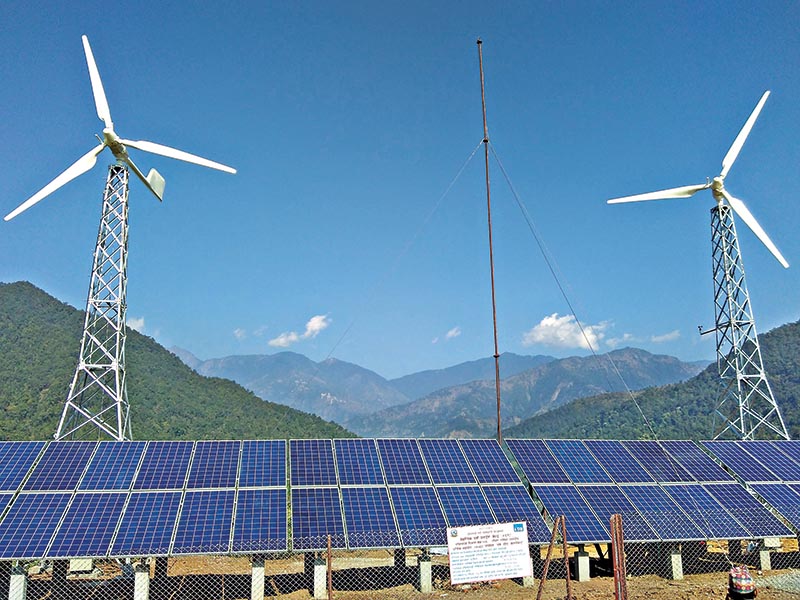85 families of Hariharpur get energy access
Sindhuli, December 12
The future of 85 households of Hariharpur Gadhi of Sindhuli district literally became a whole lot brighter today with the inauguration of the country’s largest wind-solar hybrid power system.
The Asian Development Bank (ADB) under the South Asia Sub Regional Power System Expansion Project has supported installation of 20 kilowatt wind turbines complemented by 15 kilowatt-peak of solar photovoltaic panels. The system produces 110 kilowatt-hours (kWh) of energy per day, which will easily meet the electricity demand of 87 kWh per day of the village, which shares the border with Makawanpur.
Out of the total project cost of Rs 19 million, the local community contributed Rs 1.74 million for the project and the government contributed the value added tax (VAT) amount to the project.
The energy access has fuelled a new sense of hope among the 85 families living in the remote villages. Youths in the village have started exploring business opportunities through use of electricity like operating rice mills, setting up photocopy business, among others, as the community looks to make the most of the excess energy.
Prem Bahadur Ghalan, 50, a local of the Hariharpur Rural Municipality-1 said that energy is critical for improved livelihoods and also to conduct the income-generating activities. Until now, a majority of the families are dependent on agriculture and most youths of the villages have migrated to the Middle East to seek job opportunities.
Inaugurating the wind-solar hybrid power system, Mukhtor Khamudkhanov, ADB’s country director for Nepal, said that access to clean, reliable and affordable energy will help the village to connect to the world through internet and mobile phones, and will create opportunities to boost local income.
“The electricity from the mini-grid will also open the door for commercial activities in the village and help small businesses get off the ground.”
Alternative Energy Promotion Centre (AEPC) of the government is the implementing partner of the project. The wind-solar hybrid power system can also be synchronised with the national grid when Nepal Electricity Authority — the national power utility — electrifies this remote area.
The project will be run by the community through setting up of a cooperative. They will fix the tariff of the electricity supplied to the families. The fund collected from the tariff will be deposited in the cooperative and the latter will be able to maximise the fund by making investments.
The contractor — Suryodaya Urja — will be liable for the maintenance of the project for three years. Thereafter, the community will have to maintain the project through the funds collected from the tariff. Through cooperative model, the community will be establishing the micro utility in their own community, according to Prakash Mathema, secretary at the Ministry of Population and Environment.
He lauded ADB’s support to strengthen the power sector through such innovative renewable energy solutions to help the country achieve the Sustainable Development Goals.
Six years ago, the AEPC, with support from ADB, launched its first mini grid wind-solar system in Dhaubadi in western Nepal. “The success of these two projects has demonstrated that clean energy is indeed a viable option to provide reliable energy access to rural Nepal through wind-solar hybrid systems,” said Ram Prasad Dhital, executive director of AEPC.






